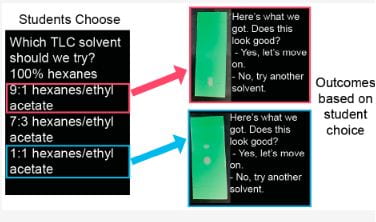Author: Elizabeth Massena
Department: Spanish & Portuguese
June 5, 2023
The pandemic has brought unprecedented stress to students and faculty across the world. Even though the Covid-19 pandemic is over, students are still dealing with its effects, such as depression and anxiety.
Numerous studies show that difficulties associated with distance learning and social isolation contributed to increases in both depression and anxiety symptoms. A survey conducted by UCI and UCLA researchers between April and May 2020 shows that 87 percent of students expressed that the pandemic has negatively impacted their mental health (Jafari, Mahtab, et al. 2021). Another study from the University of North Carolina at Chapel Hill found an increase in levels of anxiety and depression in students: “The prevalence of moderate-severe anxiety increased from 18.1% before the pandemic to 25.3% within four months after the pandemic began, and the prevalence of moderate-severe depression increased from 21.5% to 31.7%” (Fruehwirth, Jane Cooley, et al.2021)
Anxiety disorders occur when there is a feeling of constant fear and worry and these symptoms interfere negatively with daily activities such as job duties or academic activities. Depression or major depression disorder involves persistent feelings of sadness, hopelessness, and loss of interest in previously enjoyable activities. Students dealing with depression and anxiety disorders may experience a range of symptoms, including sleep disturbances, appetite changes, headaches and/or body pains, panic, and gastrointestinal (GI) problems, among others (SAMHSA 2001). Considering that these mental health issues impact students’ academic success, it is necessary to incorporate teaching strategies that promote student well-being.
Integrating wellness strategies into the classroom: Pedagogical wellness approach
The definition of wellness involves not only the absence of illness and stress. According to the Substance Abuse and Mental Health Services Administration (SAMHSA), wellness is the presence of a positive purpose in life, satisfying work and play, joyful relationships, a healthy body and living environment, and happiness. As a multidimensional concept, wellness includes emotional, physical, occupational, intellectual, financial, social, environmental, and spiritual dimensions.
In a classroom environment, well-being can be defined as students’ reduction in stress, enhanced engagement in the classroom, and, ultimately, heightened satisfaction with life (Flinchbaugh, Carol L. et al. 2021). The term “pedagogical wellness” emerged as a framework to develop pedagogical practices that support the health and well-being of faculty and students.
There are multiple techniques that can be used to improve pedagogical wellness. In this short article, I would like to focus on some suggestions from UC Healthy Pedagogy for the instructor to promote positive learning environments:
- Flexible deadlines: establishing timelines that consider a balance between students’ academic responsibilities, work. and recreational time.
- Multiple options: providing students with a variety of tasks that accommodate multiple ways of learning. Giving students extra credits activities to help succeed in the course.
- Physical activity: promoting physical activity breaks in the classroom to increase students’ focus and engagement. Incorporating brief meditation or self-reflection activities to reduce stress levels.
- Resources and Wellness Information: Sharing campus resources on mental health, disability services, financial aid, and academic aid with students.
- Connection and community: Promoting activities and spaces to strengthen relationships with and among students, encouraging students to attend office hours and building. Helping build community through social activities so that students may connect with others.
To conclude, integrating the well-being concept into classroom can approach to effectively address post-pandemic effects among students. It should be a conscious practice that needs to be reflected in all aspects of a course.
References
Jafari, Mahtab, et al. “COVID-19, Stress and Mental Health: What Students Expect from Academic Institutions during a Pandemic.” Journal of American College Health, Aug. 2021, pp. 1–8. DOI.org (Crossref), https://doi.org/10.1080/07448481.2021.1951740.
https://www.bestcolleges.com/resources/top-5-mental-health-problems-facing-college-students/
Fruehwirth, Jane Cooley, et al. “The Covid-19 Pandemic and Mental Health of First-Year College Students: Examining the Effect of Covid-19 Stressors Using Longitudinal Data.” PLOS ONE, vol. 16, no. 3, Mar. 2021, p. e0247999, https://doi.org/10.1371/journal.pone.0247999.
Flinchbaugh, Carol L. E. Moore, Whitney G. Chang, Young K. and Douglas R. May. “Student Well-Being Interventions: The Effects of Stress Management Techniques and Gratitude Journaling in the Management Education Classroom”,
Journal of Management Education 2011 36:2, 191-219.
Substance Abuse and Mental Health Services Administration (SAMHSA): Prevention and Treatment of Anxiety, Depression, and Suicidal Thoughts and Behaviors Among College Students. SAMHSA Publication No. PEP21-06-05-002. Rockville, MD: National Mental Health and Substance Use Policy Laboratory. Substance Abuse and Mental Health Services Administration, 2021.

